Design and Performance Research of a Wearable Airbag for the Human Body
Abstract
1. Introduction
2. Design of a Wearable Airbag System
2.1. Components of a Wearable Airbag System
2.2. Airbag Sensing System
2.3. Airbag Inflator
2.4. Working Principle of Wearable Airbag
3. Vehicle–Pedestrian Collision Finite Element Model
3.1. Validation of the Airbag Inflator Finite Element Model
3.2. Finite Element Model of Vehicle–Pedestrian Collision
4. Analysis of Wearable Airbag Protection Performance
4.1. Pedestrian Motion Posture during the Collision Process
4.2. Protective Performance of Wearable Airbag
5. Parameter Analysis of Wearable Airbag
6. Discussion
7. Conclusions
- (1)
- An integrated wearable airbag, which combines an inflation helmet and jacket is proposed to protect the safety of pedestrians during a vehicle–pedestrian collision. The gas mass of the inflator and the length of the pulling straps are the design parameters to improve the protection effectiveness.
- (2)
- The finite element model of the airbag inflator is first verified via an inflator pressure-tight vessel test. Then, the finite element model of vehicle–pedestrian collision is constructed to evaluate the protection performance of the newly proposed wearable airbag. The proposed wearable airbag shows an effective protection towards the HBM’s head and chest. In particular, the protection effectiveness of the head is examined via HIC15, 3 ms resultant acceleration, and the intracranial pressure.
- (3)
- The parametric study of the gas mass and the pulling strap length shows that 26 g gas and 20 mm pulling strap length provide the best protection for the HBM’s head. If the gas mass is below 20 g, the head will smash through the airbag and hit directly on the vehicle hood. If the gas mass is too big, the airbag pressure will rigidize the airbag and weaken the protection effectiveness of the airbag.
Author Contributions
Funding
Data Availability Statement
Conflicts of Interest
References
- World Health Organization. Road Traffic Injuries. Available online: https://www.who.int/news-room/fact-sheets/detail/road-traffic-injuries (accessed on 14 July 2019).
- Otte, D. Severity and mechanism of head impacts in car to pedestrian accidents. Proc. IRCOBI 1999, 27, 329–341. [Google Scholar]
- Yang, J. Review of Injury Biomechanics in Car-Pedestrian Collisions. Int. J. Veh. Saf. 2005, 1, 100–107. [Google Scholar] [CrossRef]
- Tamura, T.; Yoshimura, T.; Sekine, M.; Uchida, M.; Tanaka, O. A Wearable Airbag to Prevent Fall Injuries. IEEE Trans. Inf. Technol. Biomed. 2009, 13, 910–914. [Google Scholar] [CrossRef] [PubMed]
- Sivaranjani, T.; DhiviyaLakshmi, L.; Yogaaravinth, R.; Srivishnu, J.; Sri Karthick, M.M.; Praveenkumar, A. Fall assessment and its injury prevention using a wearable airbag technology. In Proceedings of the IEEE International Conference on Power, Control, Signals and Instrumentation Engineering, Chennai, India, 21–22 September 2017. [Google Scholar]
- Tamura, T.; Yoshimura, T.; Sekine, M. A preliminary study to demonstrate the use of an air bag device to prevent fall-related injuries. Annu. Int. Conf. IEEE Eng. Med. Biol. Soc. 2007, 2007, 3833–3835. [Google Scholar] [PubMed]
- Nemeth, B.; van der Kaaij, M.; Nelissen, R.; van Wijnen, J.K.; Drost, K.; Blauw, G.J. Prevention of hip fractures in older adults residing in long-term care facilities with a hip airbag: A retrospective pilot study. BMC Geriatr. 2022, 22, 547. [Google Scholar] [CrossRef]
- Mats, U.; Ulf, B.; Kjell, N.; Eriksson, A. Pedal Cycling Fatalities in Northern Sweden. Int. J. Epidemiol. 1993, 22, 483–488. [Google Scholar]
- Kong, C.; Yang, J.; Otte, D. A Study of Bicyclist Accidents in Changsha of China and Hannover of Germany. In Proceedings of the International Technical Conference on the Enhanced Safety of Vehicles, Stuttgart, Germany, 15–18 June 2009. [Google Scholar]
- Thompson, D.C.; Rivara, F.; Thompson, R. Helmets for preventing head and facial injuries in bicyclists. Nurs. Times 1999, 97, 41. [Google Scholar] [CrossRef] [PubMed]
- Azzolin, A.; Dainese, L.; Zanotto, S. Helmet and Process for Manufacturing such a Helmet. Italy WO2016IB50270, 20 January 2016. [Google Scholar]
- Kurt, M.; Laksari, K.; Kuo, C.; Grant, G.; Camarillo, D. Modeling and Optimization of Airbag Helmets for Preventing Head Injuries in Bicycling. Ann. Biomed. Eng. 2017, 45, 1148–1160. [Google Scholar] [CrossRef] [PubMed]
- Woo, J.; Jo, S.-H.; Byun, G.-S.; Kwon, B.-S.; Jeong, J.-H. Wearable Airbag System for Real-Time Bicycle Rider Accident Recognition by Orthogonal Convolutional Neural Network (O-CNN) Model. Electronics 2021, 10, 1423. [Google Scholar] [CrossRef]
- Jo, S.-H.; Woo, J.; Byun, G.-S.; Kwon, B.-S.; Jeong, J.-H. A Study on the Application of LSTM to Judge Bike Accidents for Inflating Wearable Airbags. Sensors 2021, 21, 6541. [Google Scholar] [CrossRef] [PubMed]
- Marconi, E.; Gatto, F.; Massaro, M. Investigation on Wearable Airbags for Motorcyclists through Simulations and Experimental Tests. In Transactions on Engineering Technologies: World Congress on Engineering; Springer: Singapore, 2019; pp. 87–100. [Google Scholar]
- Girardi, D.; Marconi, E.; Massaro, M. Assessment of Shoulder and Chest Protection of Wearable Motorcycle Airbags. In Proceedings of the International Design Engineering Technical Conferences and Computers and Information in Engineering Conference, Anaheim, CA, USA, 18–21 August 2019; American Society of Mechanical Engineers: New York, NY, USA, 2019; Volume 59216, p. V003T01A026. [Google Scholar]
- Alcala, E.; Martinez, L.; Rodriguez, C.J.; López, A.; Neira, F. Analytical Matlab/Simulink model of pyrotechnical gas generators for airbags. Int. J. Crashworthiness 2009, 14, 641–657. [Google Scholar] [CrossRef]
- Cheng, C.; Zhang, X.B.; Wang, C.; Wang, L. Numerical investigation on cooling performance of filter in a pyrotechnic gas generator. Def. Technol. 2021, 17, 9. [Google Scholar] [CrossRef]
- Liao, T.; Wang, W.; Cao, Y.; Zhao, H.; Cui, T.; Yu, H. Comparative study of pyrotechnic and hybrid side airbags on a certain vehicle type. In Proceedings of the 19th Asia Pacific Automotive Engineering Annual Conference and 2017 Chinese Automotive Engineering Annual Conference, Shanghai, China, 24–26 October 2017. [Google Scholar]
- Smith, B.W. Hybrid Inflator with Diffuser End Translating Initiator Boss. U.S. Patent US5890735, 6 April 1999. [Google Scholar]
- Hamilton, B.K.; Baglini, J.L. Hybrid Inflator and Related Propellants. U.S. Patent US5627337, 6 May 1997. [Google Scholar]
- Wang, X. Research on Airbag Deployment and Its Interaction with Environment Computational Techniques. Ph.D. Thesis, Dalian University of Technology, Dalian, China, 2015. [Google Scholar]
- Slaats, P.M.; Pitonyak, A.J.; Wipasuramonton, P.; Hunter, T.; Rains, M.; Wang, D.; Williams, C.; Miller, C. Alternative Airbag Evaluation Methodology through Cold Gas Inflation System. In Proceedings of the Sae World Congress & Exhibition, Detroit, MI, USA, 14–17 April 2008. [Google Scholar]
- Wang, H.; Hong, H.; Hao, G.; Deng, H.; Rui, Q.; Li, J. Characteristic verification and parameter optimization of airbags cushion system for airborne vehicle. Chin. J. Mech. Eng. 2014, 27, 50–57. [Google Scholar] [CrossRef]
- Pang, H.; Padiyar, P.; Patel, D. Improvement of Frontal Crash Sensor Calibration through MADYMO Simulations. In Proceedings of the International Technical Conference on the Enhanced Safety of Vehicles, Washington, DC, USA, 6–9 June 2005; National Highway Traffic Safety Administration: Washington, DC, USA, 2005; Volume 2005. 6p. [Google Scholar]
- Bosio, A.C.; Lupker, H.A. Advances in Airbag Inflator Modelling. In Proceedings of the 4th International MADYMO Users Meeting, Eindhoven, The Netherlands, 6–7 September 1993. [Google Scholar]
- Singh, H.; Ganesan, V.; Davies, J.; Paramasuwom, M.; Gradischnig, L. Vehicle Interior and Restraints Modeling Development of Full Vehicle Finite Element Model Including Vehicle Interior and Occupant Restraints Systems for Occupant Safety Analysis Using THOR Dummies; Report No. DOT HS 812 545; National Highway Traffic Safety Administration: Washington, DC, USA, 2018. [Google Scholar]
- Ward, C.; Chan, M.; Nahum, A. Intracranial Pressure—A Brain Injury Criterion. In Proceedings of the 24th Stapp Car Crash Conference, Warrendale, PA, USA, 15–17 October 1980. [Google Scholar]
- Xiao, Z.; Wang, L.; Mo, F.; Zhao, S.; Liu, C. Optimal design of pre-triggering airbag system for occupant protection performance during frontal crashes. Proc. Inst. Mech. Eng. Part D J. Automob. Eng. 2018, 233, 2850–2862. [Google Scholar] [CrossRef]
- Teng, T.L.; Liang, C.C.; Hsu, C.Y.; Tai, S.F. Kinematic responses and injuries of pedestrian in car-pedestrian collisions. In Proceedings of the IOP Conference Series: Materials Science and Engineering, Seoul, Republic of Korea, 13–15 July 2017; IOP Publishing: Bristol, UK, 2017; Volume 248, p. 012029. [Google Scholar]
- Botonis, O.K.; Harari, Y.; Embry, K.R.; Mummidisetty, C.K.; Riopelle, D.; Giffhorn, M.; Albert, M.V.; Heike, V.; Jayaraman, A. Wearable airbag technology and machine learned models to mitigate falls after stroke. J. Neuroeng. Rehabil. 2022, 19, 60. [Google Scholar] [CrossRef]
- Zhang, Q.; Li, H.Q.; Ning, Y.K.; Liang, D.; Zhao, G.R. Design and Realization of a Wearable Hip-Airbag System for Fall Protection. In Proceedings of the Fourth International Bionic Engineering Academic Conference, Nanjing, China, 13–16 August 2013. [Google Scholar]
- Fukaya, K.; Uchida, M. Protection against Impact with the Ground Using Wearable Airbags. Ind. Health 2008, 46, 59. [Google Scholar] [CrossRef]
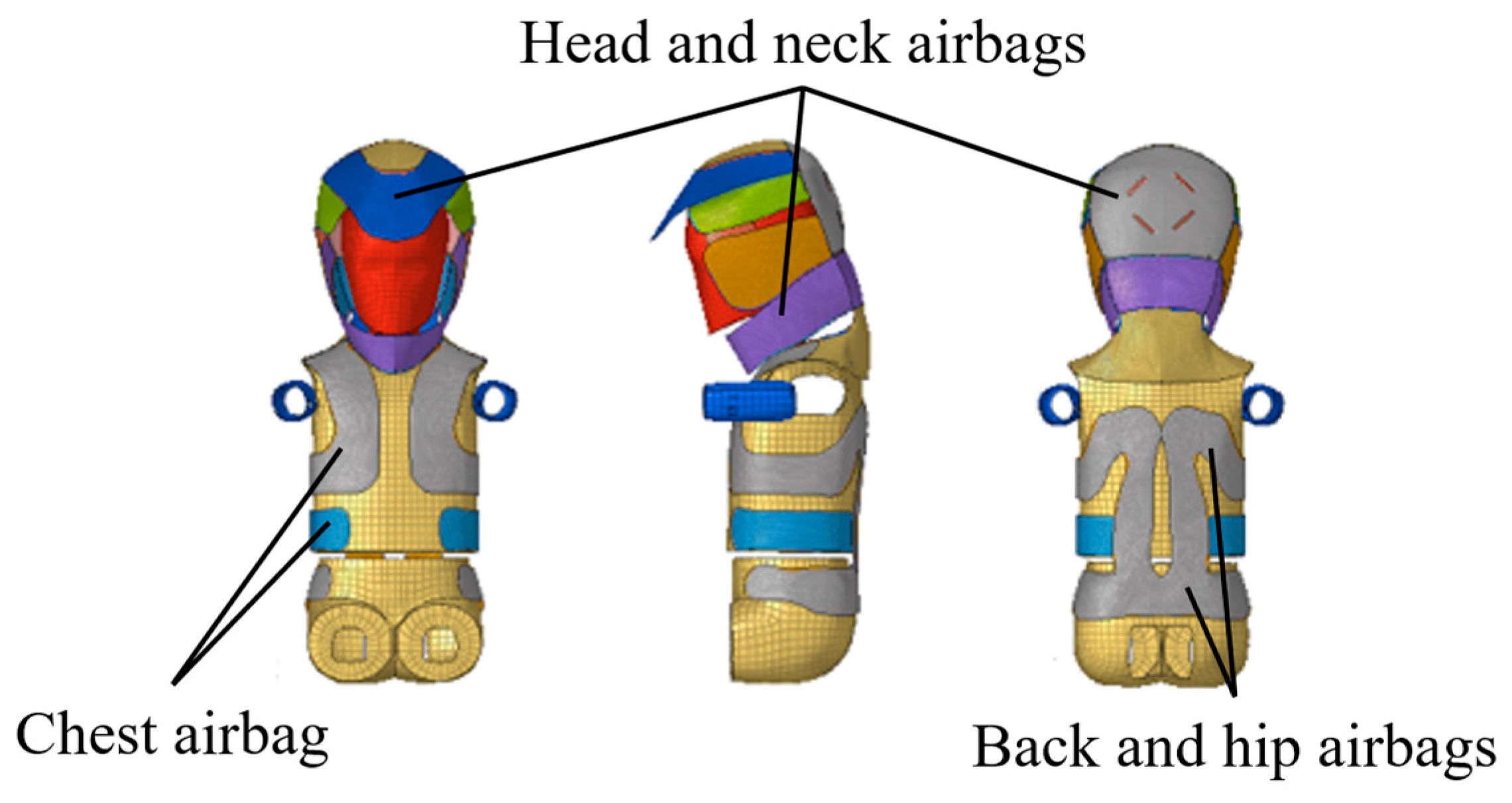

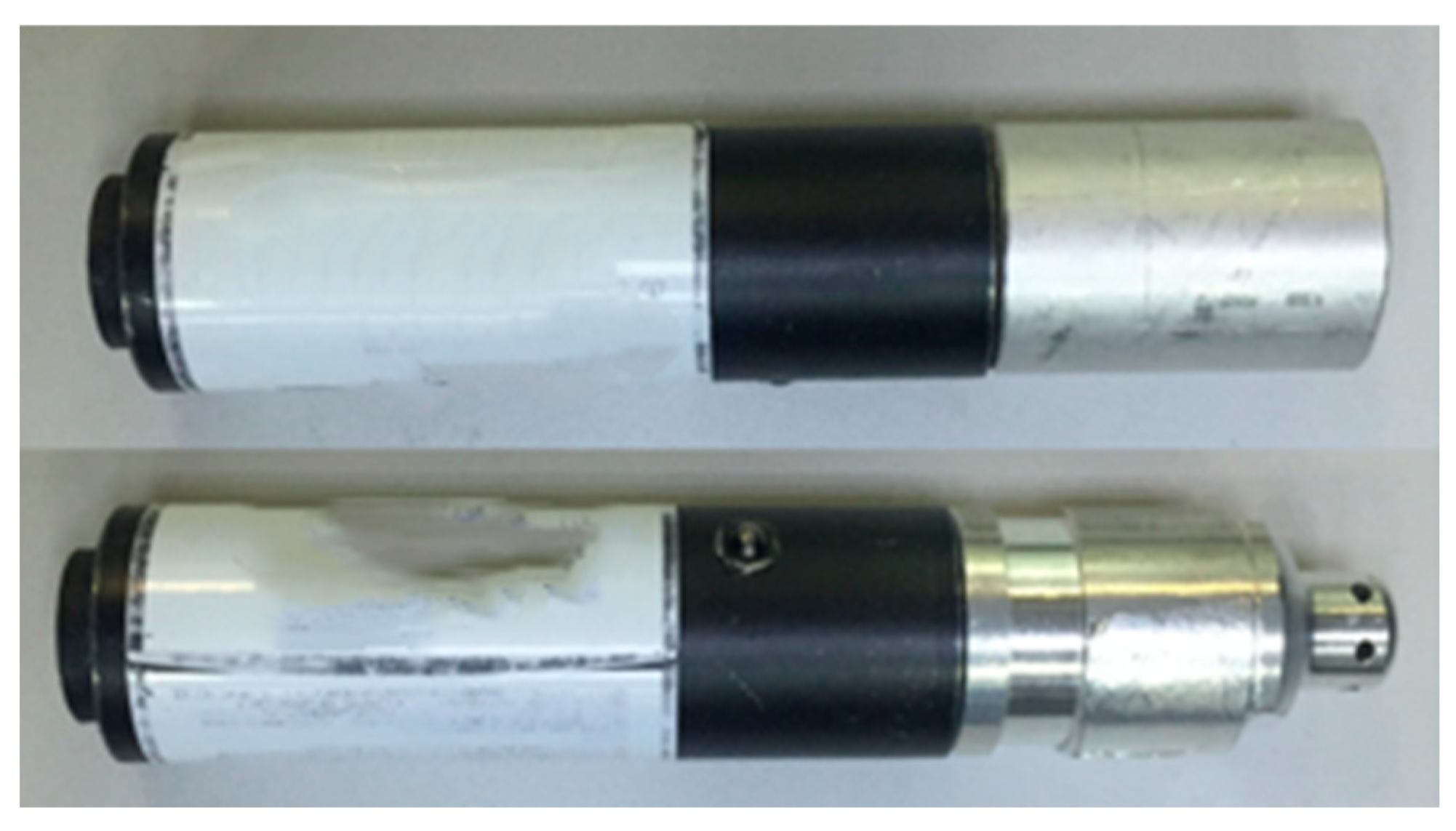

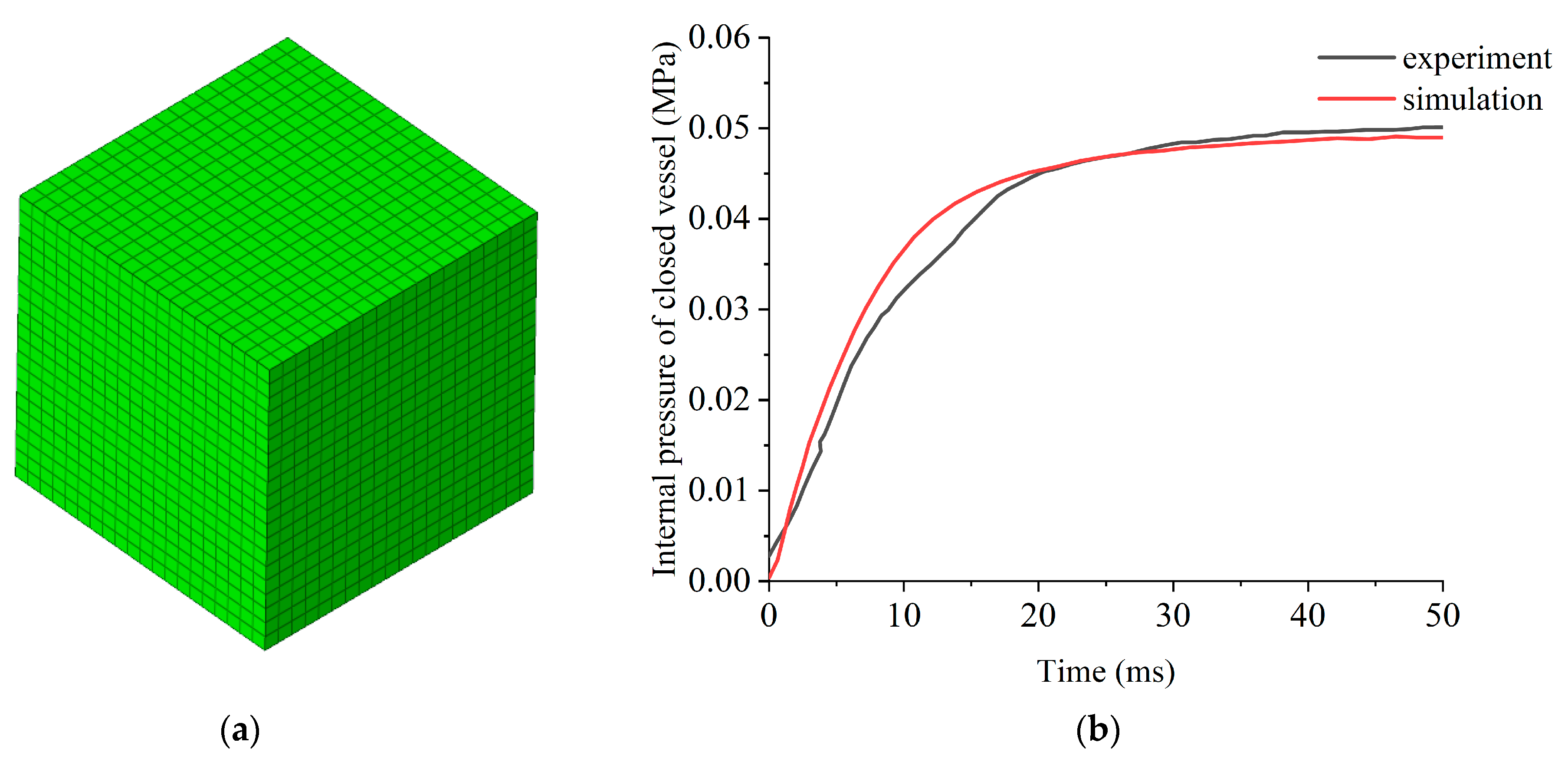

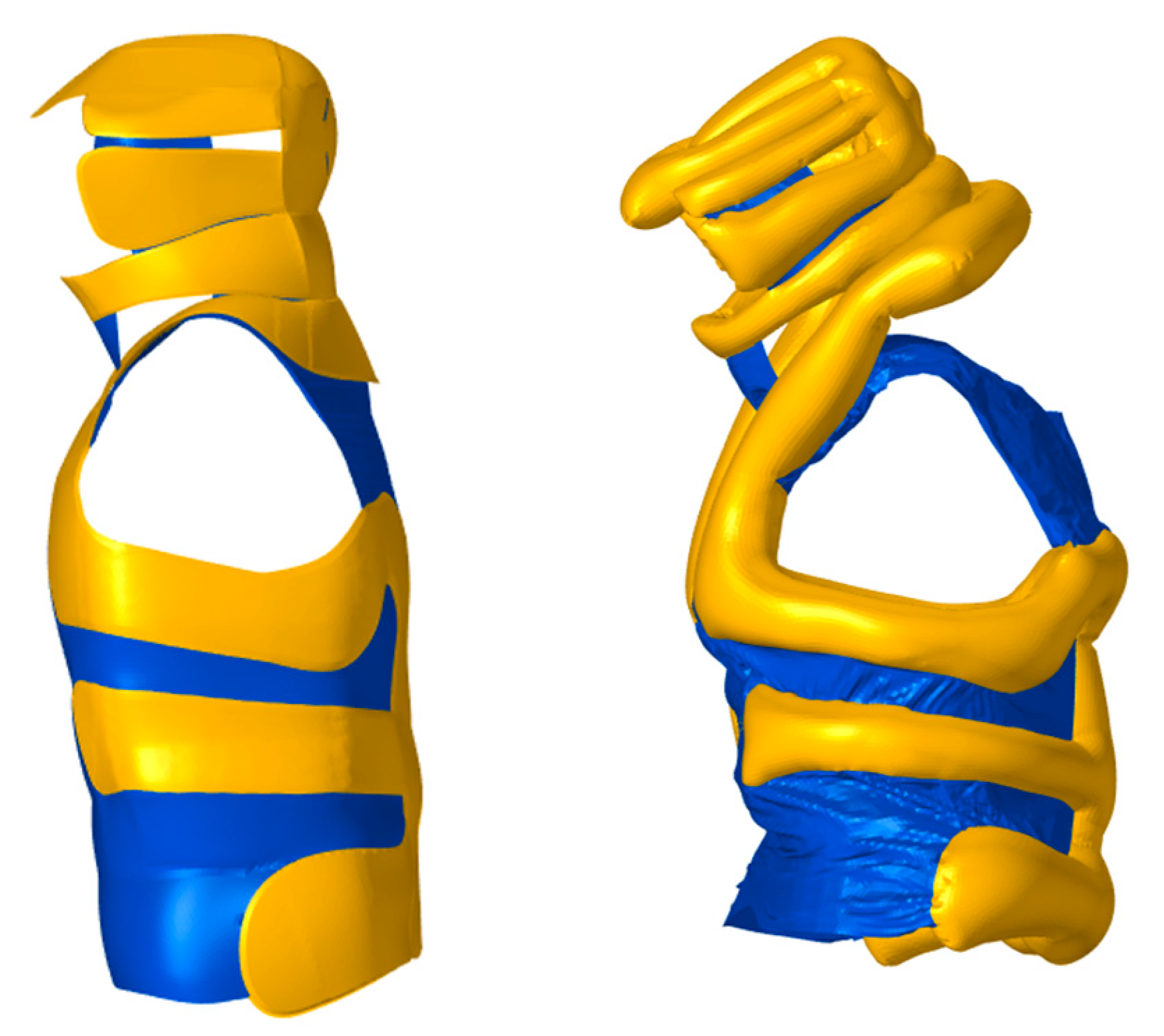
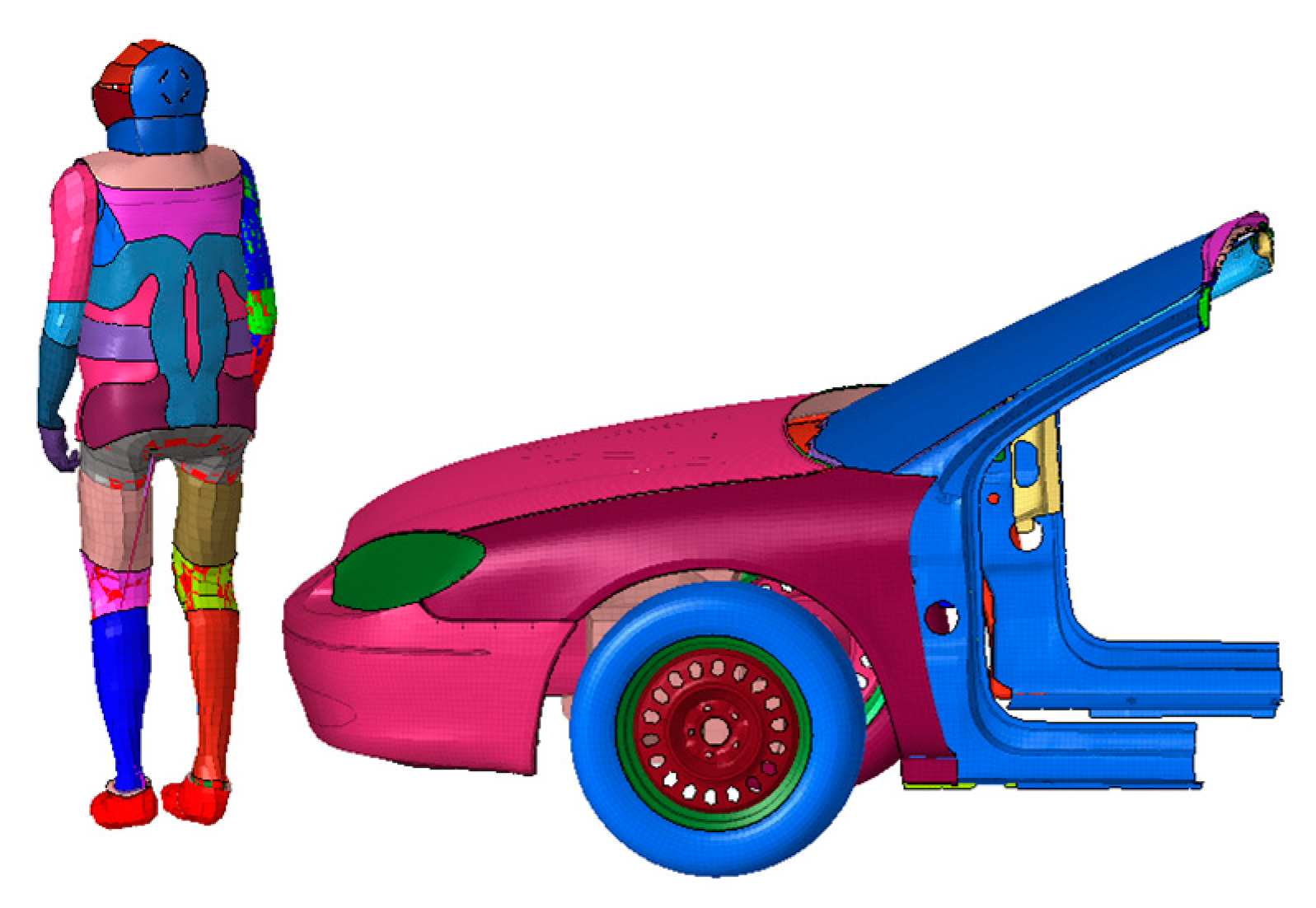
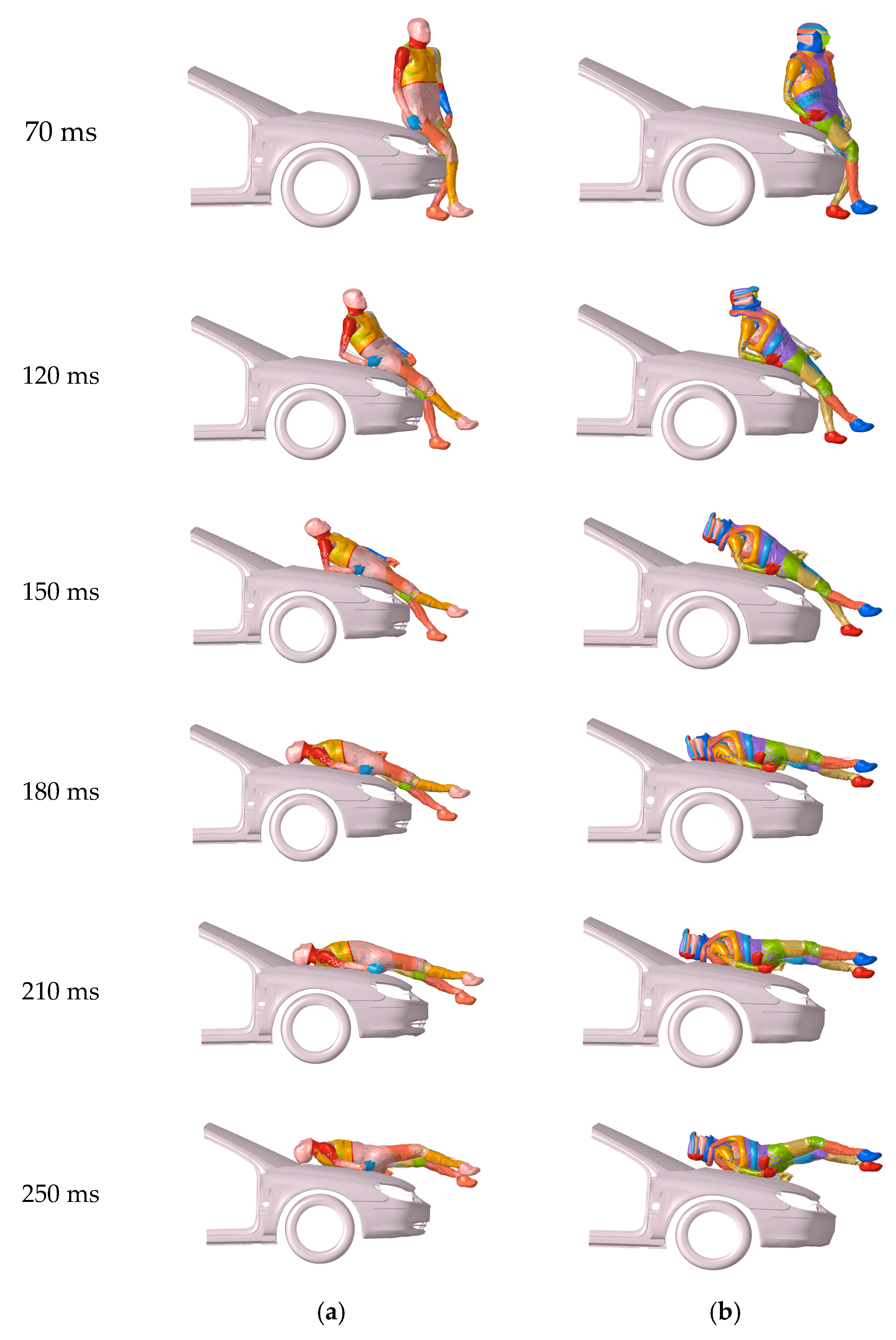

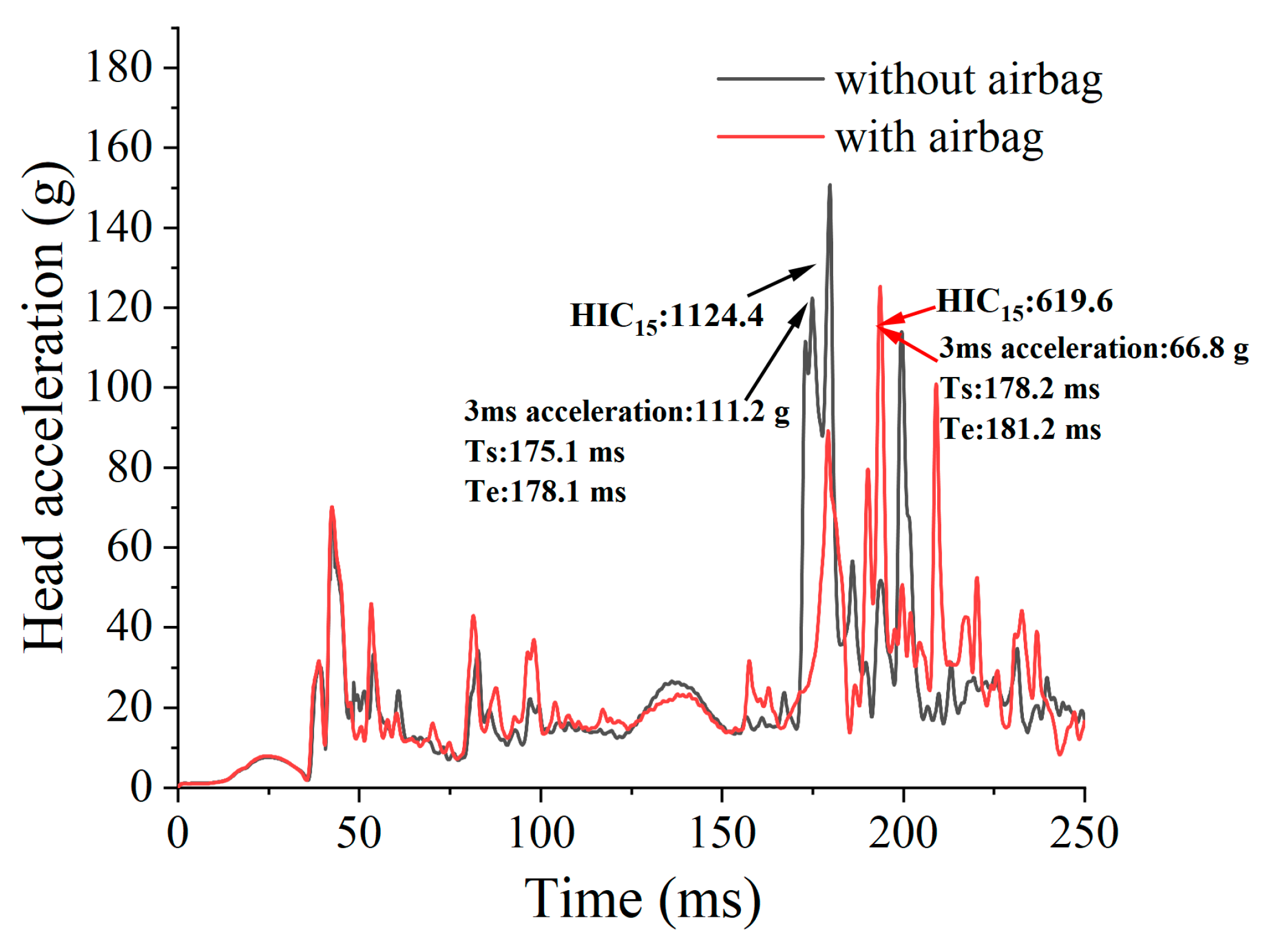

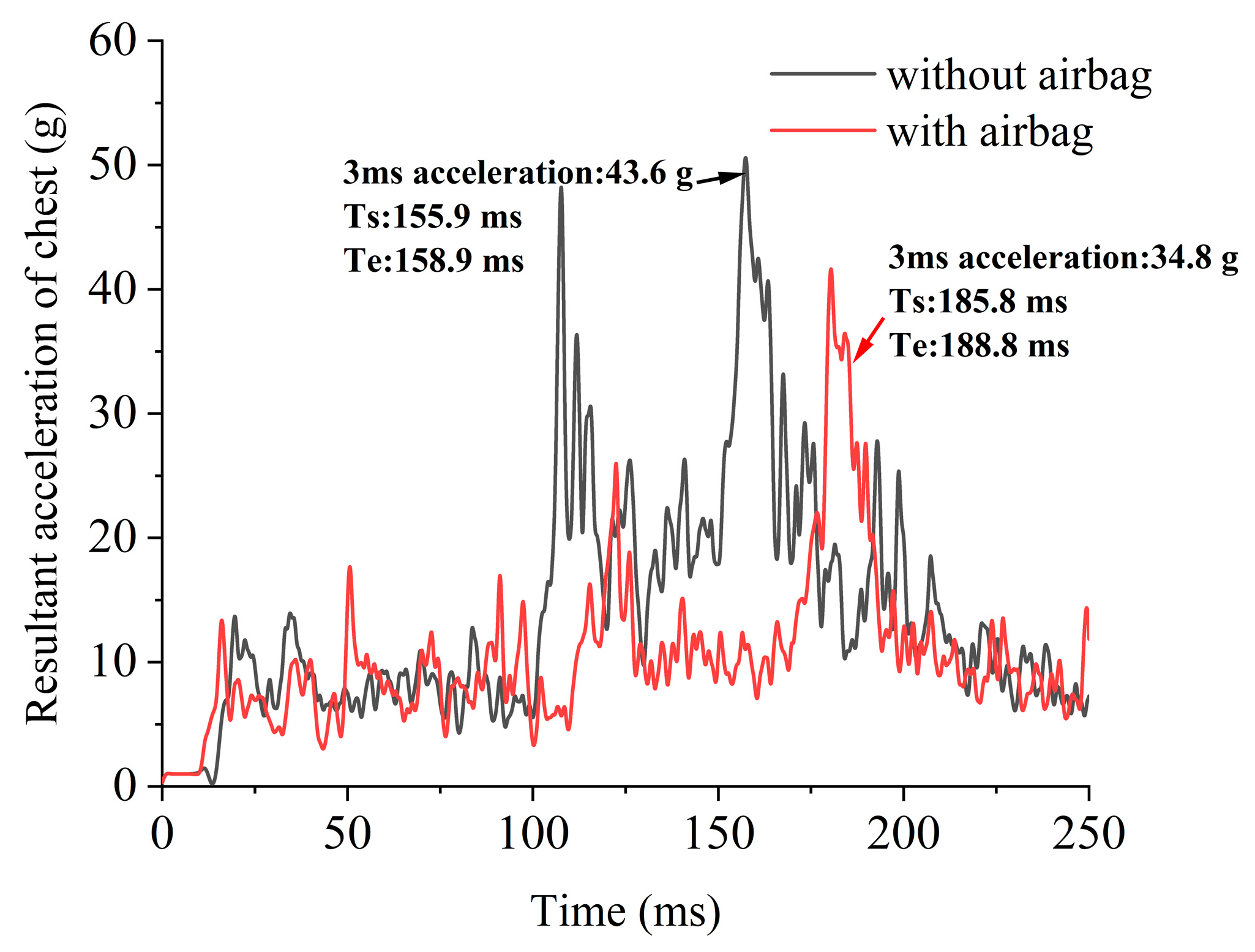
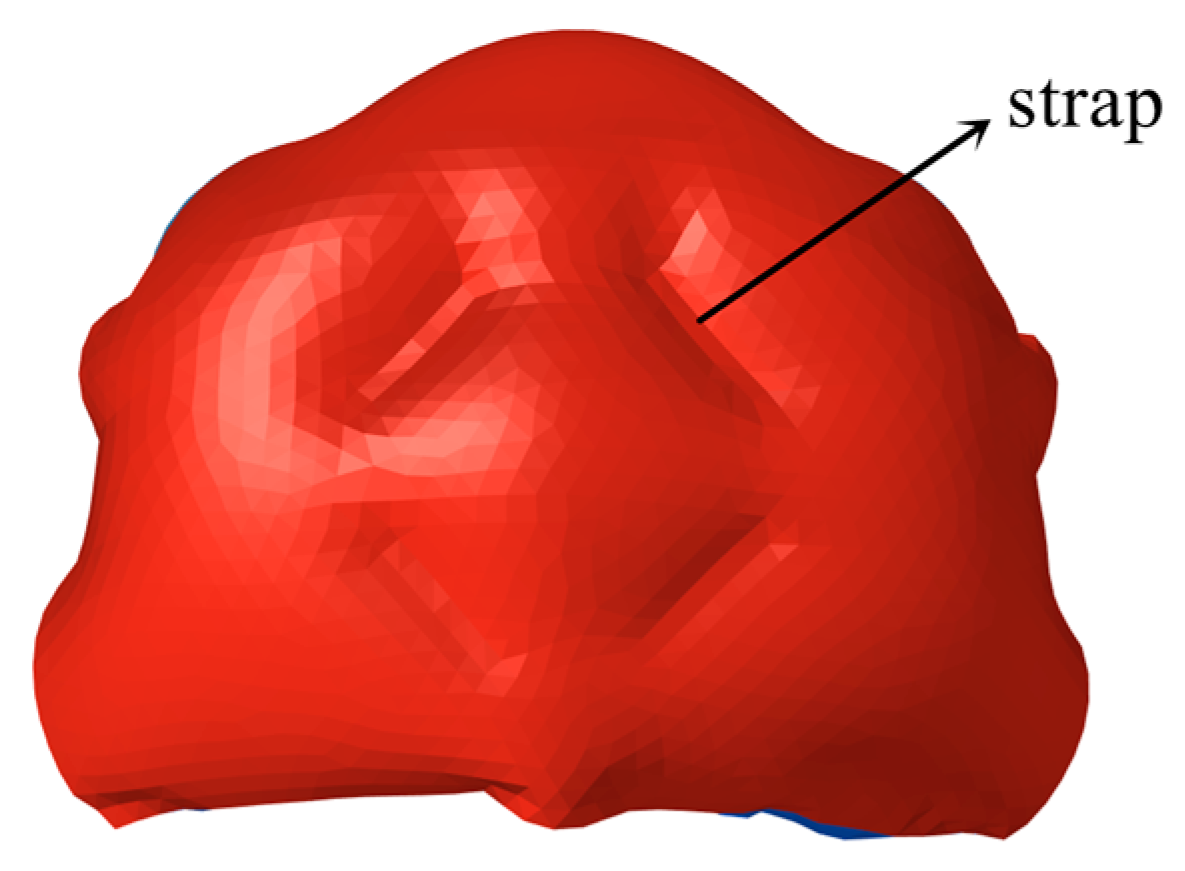


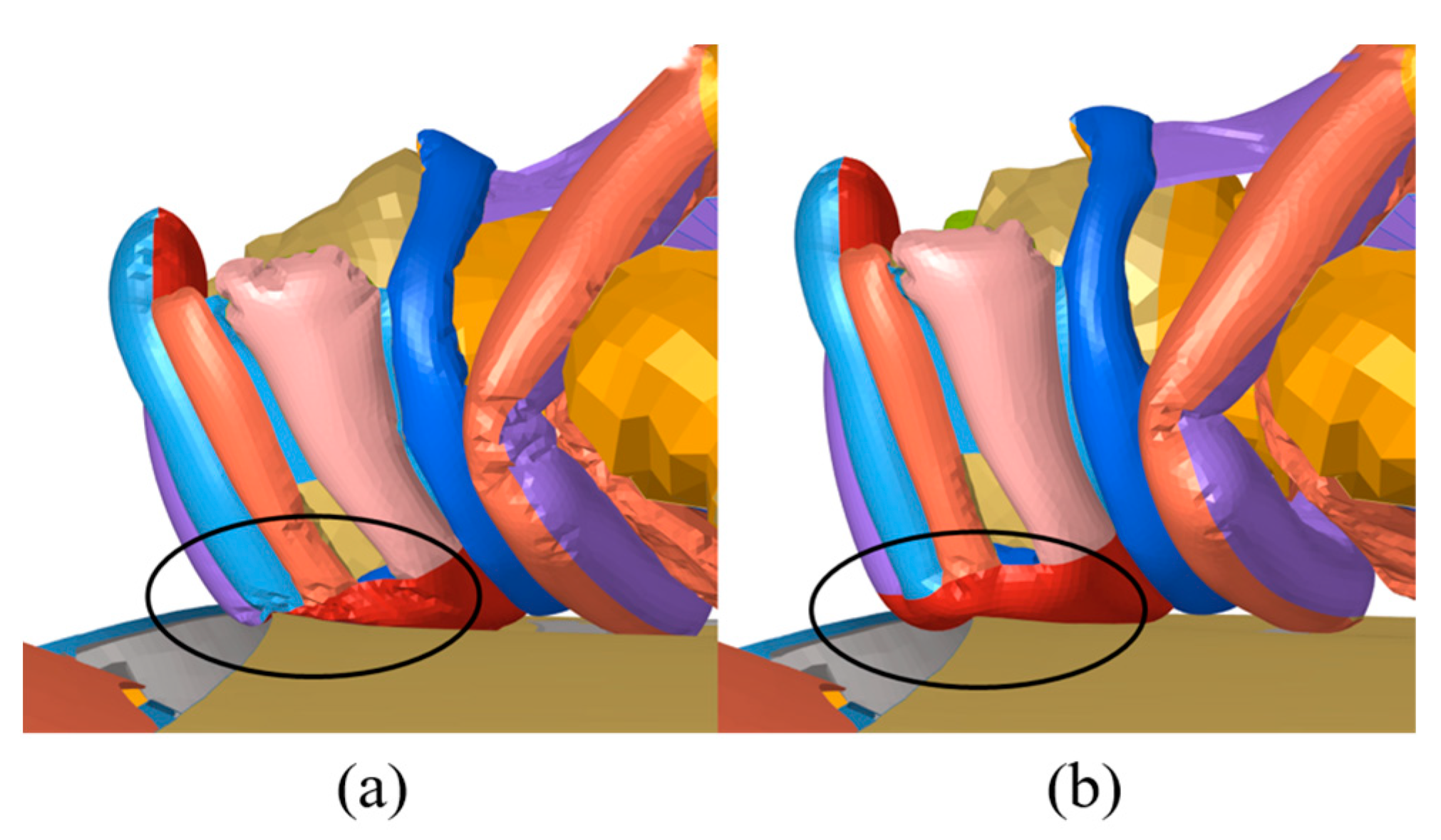
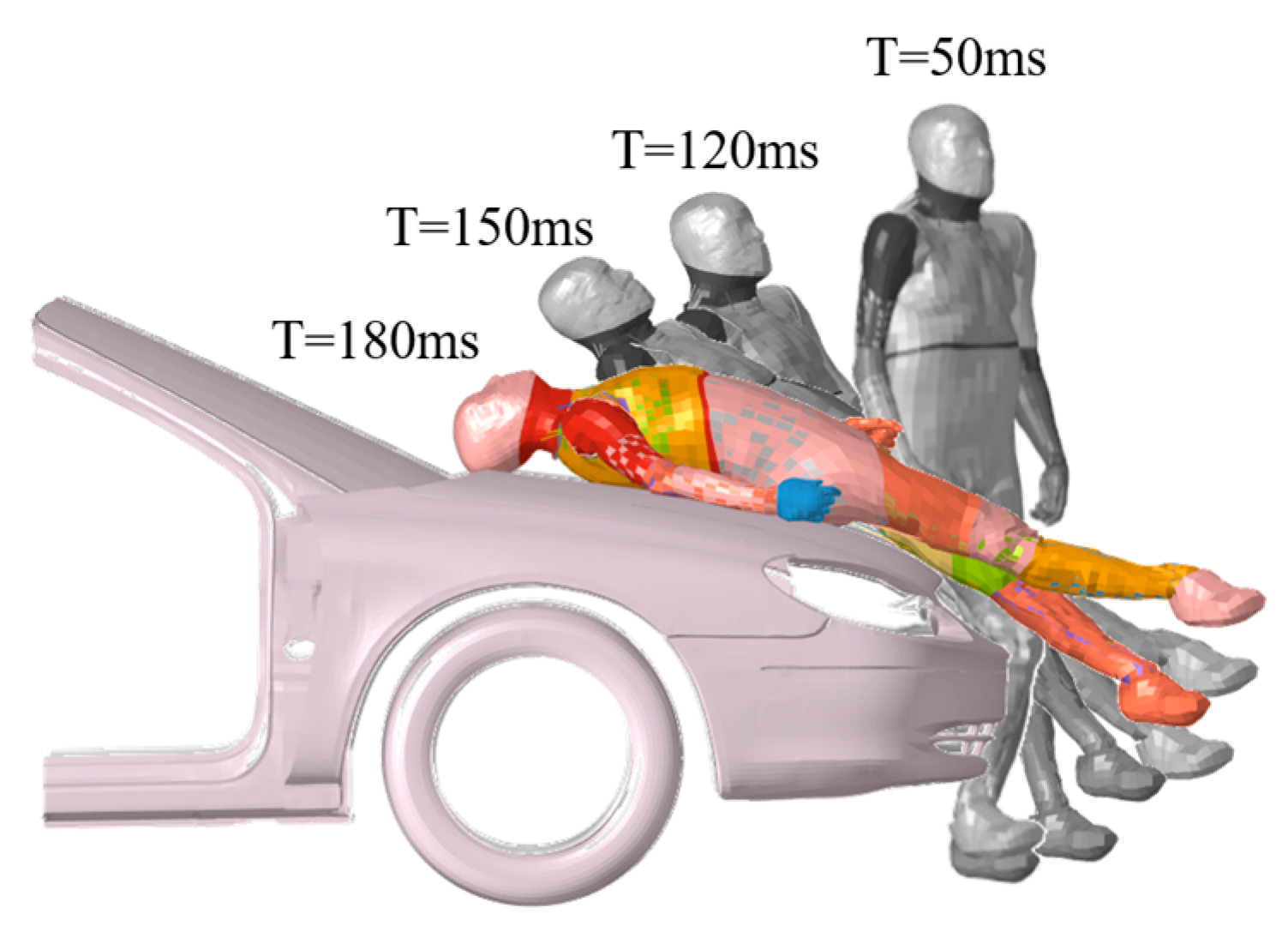
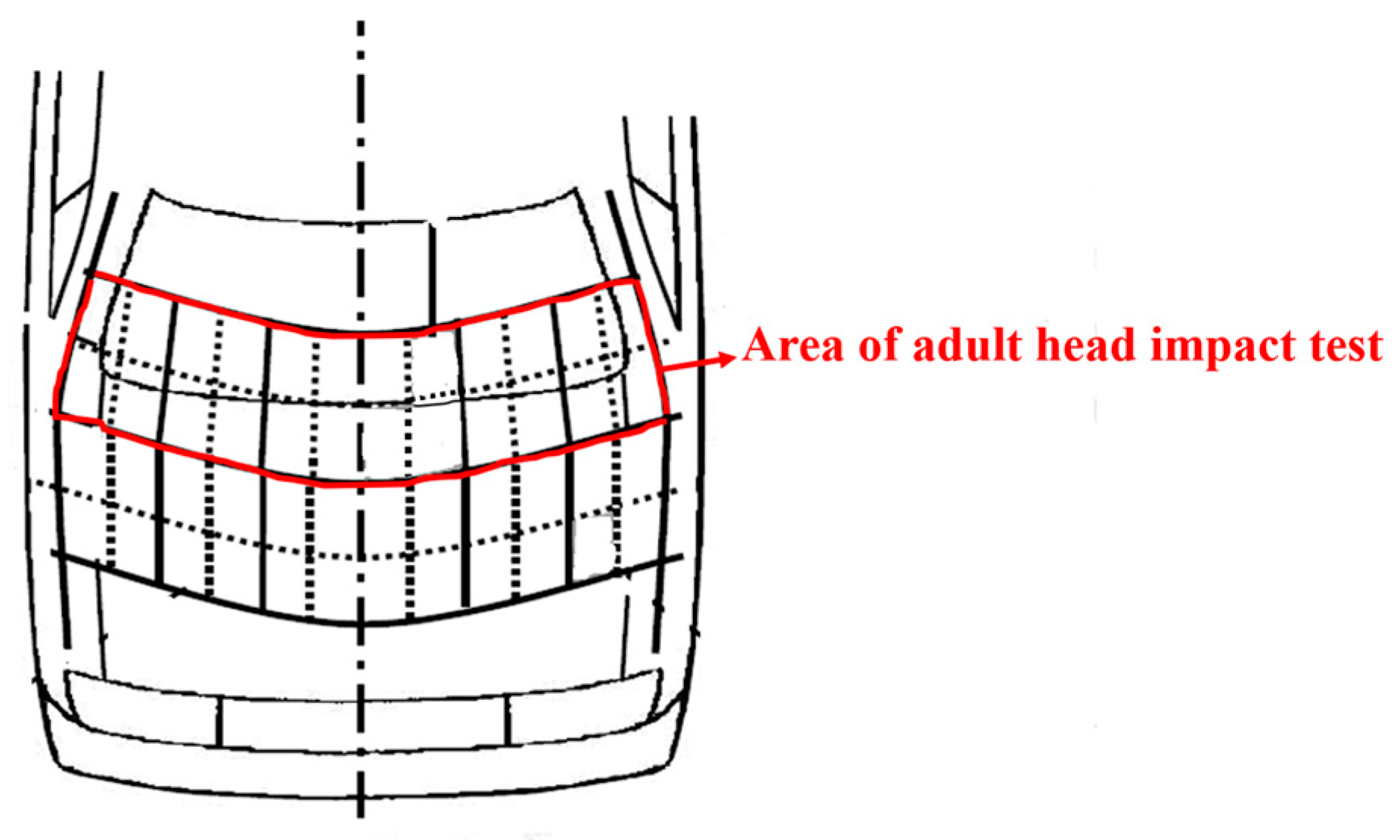
| Head | Chest | |||
|---|---|---|---|---|
| Injury Indicators | HIC15 | 3 ms Resultant Acceleration of the Head (g) | Intracranial Pressure (kPa) | 3 ms Resultant Acceleration of the Chest (g) |
| Without airbag | 1124.4 | 111.2 | 261.5 | 43.6 |
| With airbag | 619.6 | 66.8 | 168.6 | 34.8 |
| Improvement rate | 45.9% | 40.0% | 35.5% | 20.2% |
Disclaimer/Publisher’s Note: The statements, opinions and data contained in all publications are solely those of the individual author(s) and contributor(s) and not of MDPI and/or the editor(s). MDPI and/or the editor(s) disclaim responsibility for any injury to people or property resulting from any ideas, methods, instructions or products referred to in the content. |
© 2023 by the authors. Licensee MDPI, Basel, Switzerland. This article is an open access article distributed under the terms and conditions of the Creative Commons Attribution (CC BY) license (https://creativecommons.org/licenses/by/4.0/).
Share and Cite
Zhang, X.; Xue, Z.; Tu, W. Design and Performance Research of a Wearable Airbag for the Human Body. Appl. Sci. 2023, 13, 3628. https://doi.org/10.3390/app13063628
Zhang X, Xue Z, Tu W. Design and Performance Research of a Wearable Airbag for the Human Body. Applied Sciences. 2023; 13(6):3628. https://doi.org/10.3390/app13063628
Chicago/Turabian StyleZhang, Xuerong, Zhixiang Xue, and Wenqiong Tu. 2023. "Design and Performance Research of a Wearable Airbag for the Human Body" Applied Sciences 13, no. 6: 3628. https://doi.org/10.3390/app13063628
APA StyleZhang, X., Xue, Z., & Tu, W. (2023). Design and Performance Research of a Wearable Airbag for the Human Body. Applied Sciences, 13(6), 3628. https://doi.org/10.3390/app13063628





